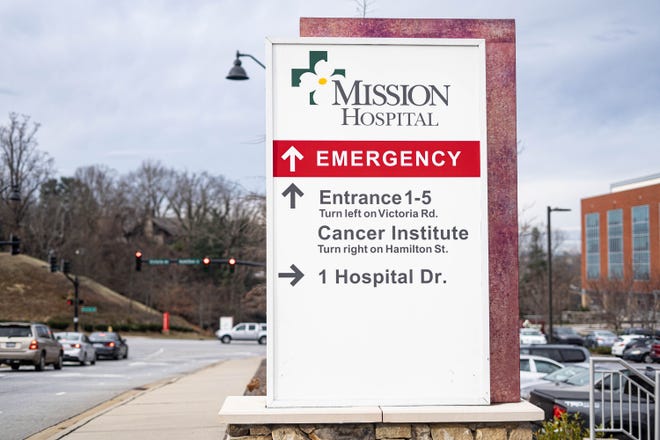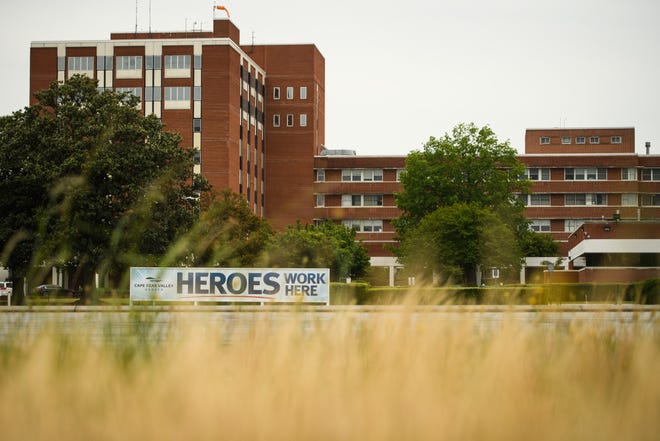NC Answers: How to see what hospitals will charge before you go – Citizen Times

Many things come with a clear price.
Before someone buys a coffee or gets a haircut, they’re usually aware of the cost — or at least they can be with a simple question. But hospitals haven’t operated this way.
Patients provide their health insurance (if they have it), receive medical care, then brace for the bill. With deductibles and out-of-pocket expenses rising, the amount can be steep: Nearly one in five Americans carries medical debt and half say they’ve postponed or forgone health care due to cost.
Last year, the federal government established a new rule to demystify hospital prices.
Beginning Jan. 1, 2021, every hospital has been required to disclose estimated prices for at least 300 medical services (or as many as they perform if fewer) on a user-friendly website. Hospitals also have had to post technical price data for third-party companies to convert into online cost comparison tools.
In addition to hospitals, the rule mandates health insurance companies post their payment rates starting July 1.
The Hospital Price Transparency rule originated in the Affordable Care Act and was later adopted by the Trump Administration. By arming the public with more information, the government hopes customers’ wield their economic power to pressure providers to lower prices.
But the rule’s implementation, in North Carolina and nationwide, has been rocky.
Suing to stop the price transparency rule
In 2020, the American Hospital Association unsuccessfully sued to stop the transparency rule from taking effect.
The North Carolina Healthcare Association, which represents most hospitals in the state, also objected, fearing the policy forced facilities to reveal “trade secrets” that give insurance companies leverage to lower their reimburses said Cody Hand, the association’s senior vice present of government relations.
Well into last year, many hospitals still weren’t fully complying with the rule. In March, The Wall Street Journal found numerous providers, including Novant Health in North Carolina, had used a special coding to prevent web search engines from detecting their price data.
NC Answers: Why North Carolina doesn’t allow rent control
The next month, the federal Centers for Medicare and Medicaid Services (CMS) banned the coding. Then in July, the Biden Administration raised the penalties hospitals faced for non-compliance to a maximum of $5,500 per day and a total of $2 million per year.
As of early January, CMS confirmed it had issued 342 non-compliance warnings to hospitals, but no fines. CMS declined to share how many of these warnings went to North Carolina facilities.
On Jan. 13, North Carolina Attorney General Josh Stein released a report that 122 hospitals in the state had met the pricing requirements while around one in six facilities still hadn’t.
The North Carolina Healthcare Association says its member hospitals are working toward compliance amid the difficulties of the pandemic.
“Everybody’s making efforts, but we had two surges, they’re short-staffed, and the hospitals that are having problems (with compliance) are typically your smaller hospitals where their staff are pulling multiple jobs,” Hand said.
Yet others accused North Carolina hospitals of purposefully dragging their feet in an attempt to keep prices hidden.
In an August interview with the USA Today Network, North Carolina State Treasurer Dale Folwell said hospital and insurance leaders engaged in “cartel like activities,” when they conceal their prices.
Where the public can find hospital price estimates in North Carolina
There are currently two places the public can look to find hospital prices.
Under the transparency rule, most North Carolina hospitals offer online portals where patients can enter their insurance information and receive estimate costs for a long list of services. Per the rule, the estimates should include discount cash rates as well as minimum and maximum charges for insured patients.
Hospitals’ estimator tools can be tricky to find. Entering a facility name and a term like “price estimator” into Google often works, though for some hospitals, it’s necessary to navigate through internal links on their websites to locate their portals.
Another way to research prices is to check the cost comparison platforms of start-up companies like Turquoise Health, which allow searches by zip code. Turquoise’s database, aggregated from the information hospitals post, shows costs for the same services at a facility can vary by hundreds of dollars based on a patient’s insurance.
And none of these prices are guarantees. For example, the price portal for Mission Health in Western North Carolina states “the costs provided in this tool are informational cost estimates only and are not a guarantee of what you will actually be charged.”
The unpredictability of medical care can make it hard for providers to give concrete prices ahead of time. A procedure may typically cost a certain amount, but the care process can be rife with unexpected complications, new discoveries, extra overnight stays, and disputes with insurance companies that all may alter the price.
Health care news:Travel nurses cash in as NC hospitals sign significant numbers of temporary staff
Cody Hand said the NCHA opposes the price transparency rule in part because the listed figures could give the public an incomplete picture. But others contend hospitals could try harder to give people a fuller sense of pricing before they administer care.
“I mean, look, medicine is complicated,” said Barak Richman, a Duke law professor who studies health care economics. “But there are lots of things that are complicated, and there are lots of things that involve variable costs. There are lots of (non-medical) companies that have figured out ways to predetermine average costs and come up with a good pricing system, and I think that for most of medicine that would be possible.”
Insurance rate disclosures on horizon
It remains to be seen if price transparency will drive down prices.
The new data could prompt expensive facilities to charge less, Richman explained, but it may actually cause some lower-cost hospitals to raise prices if they can now see their competitors are charging more.
More than a lack of transparency, Richman attributes high health care costs to hospital mergers. In the last decade, hospital consolidation has increased both nationwide and in North Carolina. Multiple studies have linked these mergers to rising prices.
“Disclosing prices won’t necessarily increase any kind of structural competition,” Richman said.
Though price data has limitations, the public is about to have access to a lot more of it.
On July 1, insurance companies will be required to publish machine-readable files with all their in-network and out-of-network rates. Then next year, insurance companies will have to create online cost comparison portals for customers.
Health care experts say this trove of insurer data, compared to the hospital data, could benefit consumers to a greater degree.
NC Answers: Is tap water safe to drink in North Carolina?
Many anticipate these rate disclosures will allow employers and managed care organizations to make more informed decisions regarding which plans cover their workers and members.
In terms of market pressure, such larger scale decisions could move the needle. And pressure, the government hopes, will push insurance companies to make their plans more appealing.
Brian Gordon is a statewide reporter with the USA Today Network in North Carolina. Feel free to email him at bgordon@gannett.com or follow him on Twitter @skyoutbriout









